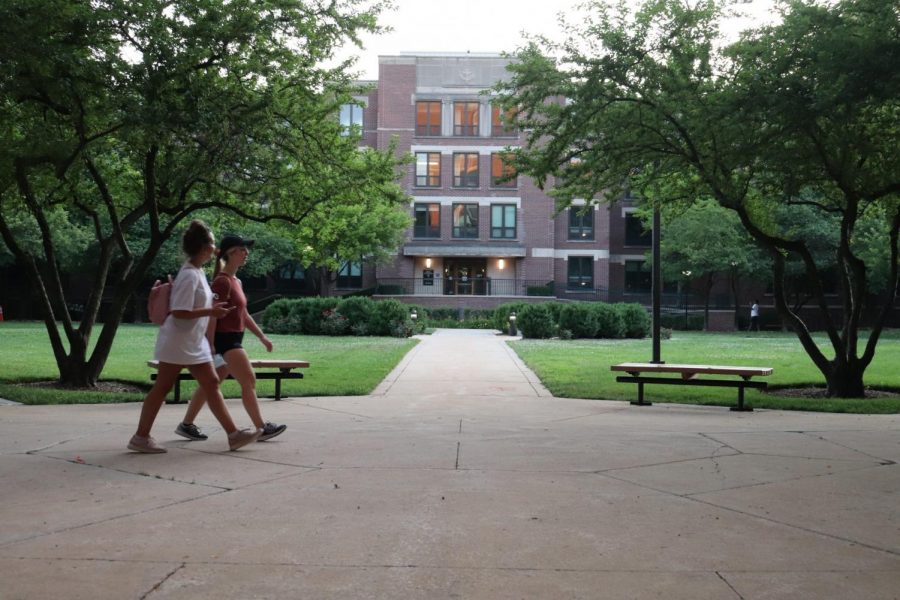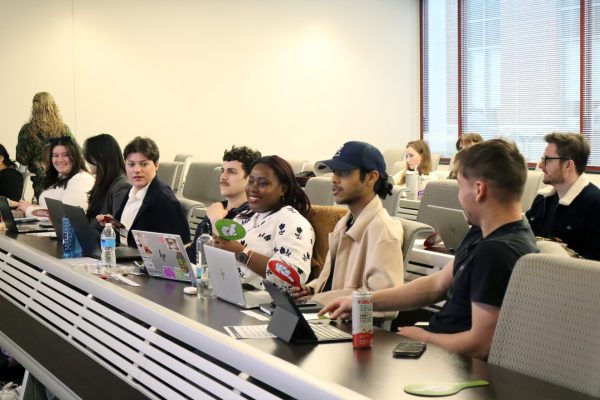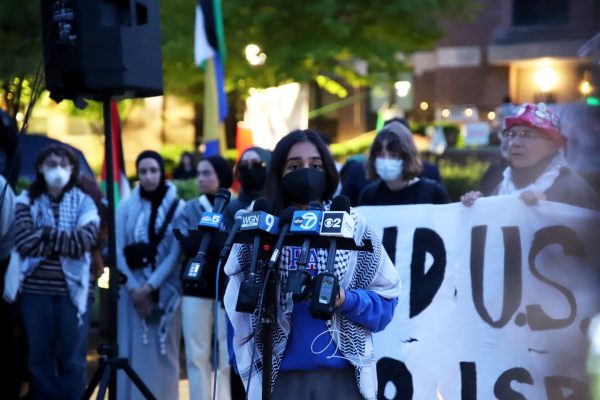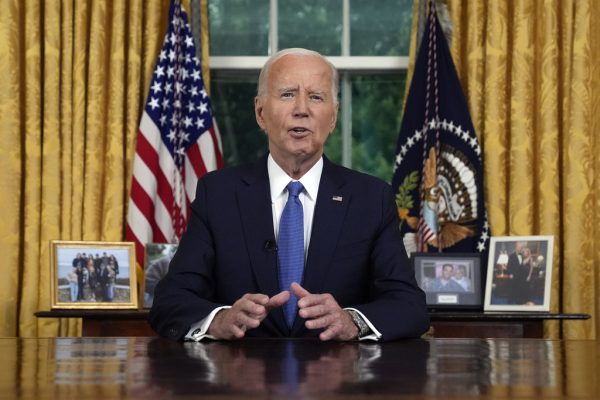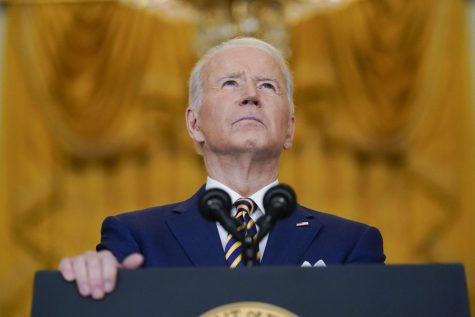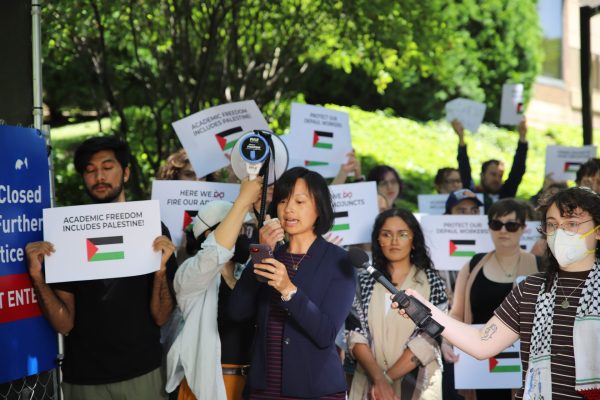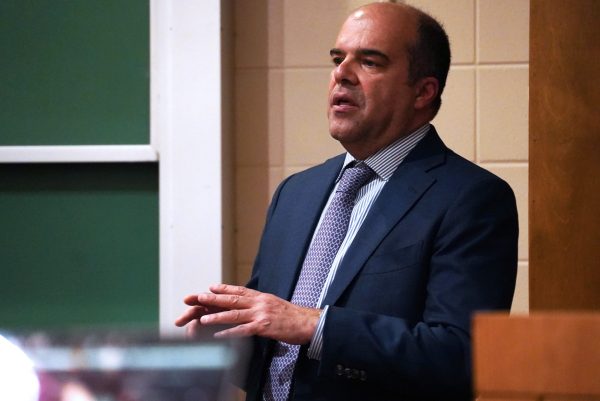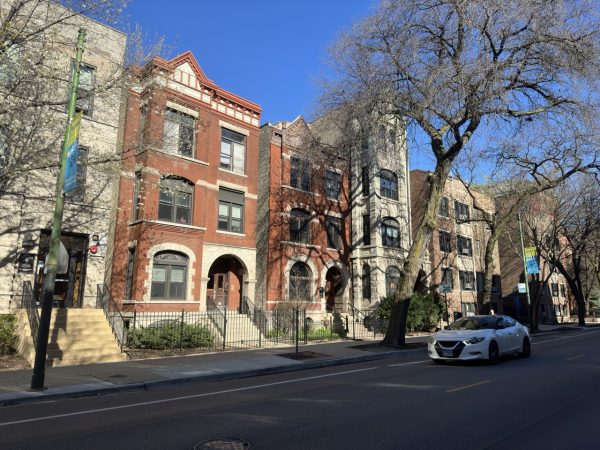DePaul establishes Native land acknowledgment
Students walk on the Quad, located on DePaul’s Lincoln Park campus.
What was once vast miles of largely untouched marshland surrounding a river lined with cattails has since become a booming metropolis home to nearly 3 million people. Back then, the land was occupied by the indigenous tribes around the Great Lakes who maintained deep connections with this land where they lived, worked and worshiped.
Today, the city of Chicago sits on the ancestral lands of more than ten native tribes and is home to one of the largest urban native communities in the United States, with more than 65,000 Natives from over 175 different tribes recorded in 2018.
Over 200 years after white settlers first occupied this area and forced Native Americans to relocate, DePaul is now taking steps to acknowledge the complex history, present-day and future of the land it calls home.
“It’s an important first step to acknowledge where we are located and who was here before us and what kind of relationship that we as a university can have with the land that we occupied and with the people who occupied it before we did,” said Lisa Poirier, a DePaul religious studies professor with an expertise in Native American religions. “I think it’s important, if you’re a settler, to come to terms with the history of the land that you occupy and to realize that you’re already in a relationship not just with that land, but with the indigenous people who have lived on that land for centuries before you arrived.”
DePaul’s new Land Acknowledgement Statement from the Office of Institutional Diversity and Equity (OIDE), crafted by a group of university members including Native faculty, staff and students, aims to highlight the whole truth of the settlement and development of the city of Chicago and eventually the university itself.
“It took almost a year of researching, meeting with stakeholders, vetting with shared governance and nine drafts before completing the statement,” said Elizabeth Ortiz, DePaul’s vice president of OIDE. “DePaul’s Land Acknowledgement is a living document, and we will continue to work with the Native community to update it when needed.”
Divided into three distinct paragraphs, the first acknowledges that members of the DePaul community “live and work on traditional Native lands that are home to well over one hundred different tribal nations.”
Further it reads: “We extend our respect to all of them, including the Potawatomi, Ojibwe, and Odawa nations, who signed the Treaty of Chicago in 1821 and 1833. We also recognize the Ho-Chunk, Myaaamia, Menominee, Illinois Confederacy, and Peoria people who also maintained relationships with this land.”
The statement also focuses on the distinct role the Catholic Church played in this land acquisition through the creation and use of the Doctrine of Discovery.
“This doctrine has been used by countries throughout the Americas, including the U.S., to legitimize colonial policies of displacement and genocide toward Native peoples and to justify colonial legacies of white superiority and global capitalism,” it reads.
Chris Tirres, director of DePaul’s Center for Religion, Culture and Community, helped write the statement and notes the unique importance of specifically citing the influence of the church.
“Given that we’re coming from DePaul as well, we thought it was important that we hit straight on the Catholic Church’s complicity in land acquisition and the takeover of Native communities,” he said. “I will say that religion, of course, is a very complicated human enterprise and so it was important to us not only to highlight the fact that the Catholic Church was complicit in land acquisition but also it was important for us to say in the spirit of St. Vincent de Paul, we want to work through this.”
Finally, the statement reaffirms the university’s commitment to equity and inclusion, particularly as it relates to Native faculty, staff, students and the extended indigenous community. According to the university’s Institutional Research and Marketing Analytics (IRMA), 34 Native students were enrolled at DePaul in 2020, a slight increase from 28 students the year before. Only four faculty or staff members identify as being Native, according to the same dataset.
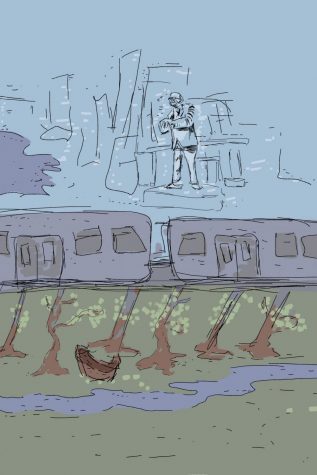
Notably, the land acknowledgment recognizes the “enduring presence of Native peoples” at DePaul, hitting squarely on one of the biggest obstacles for Native Americans today.
“Native people are usually located in the past,” Poirier said “They’re treated as historical artifacts rather than as present-day communities, flourishing communities. And even when they are acknowledged as present-day communities they’re usually located on reservations and that’s only half the story.”
Land acknowledgments like this one, she said, can help to shift the narrative about Natives, both past and present.
“There are Native folks in every major urban center in the United States,” she said. “And the fact that there is such a vibrant Native community that’s trying to make itself heard here, I think that’s an important aspect of our land acknowledgment as well — that we’re still sharing this land with all Native people who currently are our neighbors in Chicago.”
Becoming increasingly more common since the start of 2020, land acknowledgments are often composed as living documents with the intent to collaborate with the local Native communities. These statements, Tirres said, are about honesty and truth telling when it comes to our shared history.
“It’s our reality. The Native community has suffered terribly from different forms of Western colonialism and westward expansion,” he said. “Some of that has been made possible through the church, and so we need to be very clear about that as well and own up to it. But at the same time, true healing and transformation can’t even begin if you don’t tell the stories, if you don’t recognize where people are coming from and if you don’t recognize everything that has brought us to this point.”
Created with the intention to serve more as an active conversation starter than a static official document, OIDE hopes it will become common practice to incorporate the land acknowledgment into all university events and ceremonies.
“This has to be an ongoing, educative process. It’s not just you say the statement and you forget about it,” Tirres said. “You have to use the statement in ways to invite people into a larger conversation and a larger reckoning with both the historical moment and the present moment of Native Americans.”


